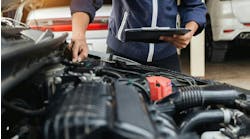Wendell Hays is the senior product manager, Steering Products, with Federal-Mogul Corporation.
How has the economy at large affected the market for wheel hub bearings?
The market has seen unprecedented increases in raw material costs. These rising costs, coupled with a weakening US dollar, have drastically increased manufacturing costs for sealed hub assemblies. Additionally, the larger tapered hub assemblies used on light-truck platforms have entered their prime replacement age. The popularity of these more expensive hub assemblies and the increased cost of materials have combined to create significant increases in the average price of sealed hub assemblies to the consumer.Are full assemblies becoming the "norm" for replacements (as opposed to non-compressed, which need assembled at a machine shop)?
It would be more accurate to say that the vast majority of light vehicles on the road today use some type of sealed bearing design. The smallest design is a sealed bearing that is pressed into the knuckle. While this is not a full assembly, it is a common design (used in passenger cars) that eliminates the need for a separate wheel seal. The larger designs are sealed hub assemblies that bolt to the knuckle and serve as the mounting surface for the brake rotor and which secure the wheel to the vehicle.
What are the most popular types of wheel bearings in your experience? (tapered, rolled, ball bearings)
Bearing type is typically a function of the application. Most passenger car applications are designed with sealed bearings or hub assemblies that feature ball bearings for better cornering and ride characteristics. Light-truck applications tend to utilize tapered hub assemblies, which provide better load-carrying capabilities. Since the bearing elements are internal components, cosmetically these parts will look the same to the consumer. Large commercial trucks still commonly utilize tapered bearing sets and unitized oil bath seals.
Are there any strategies in place to sell wheel hub bearings as preventive maintenance items (have techs check the bearings when doing brake jobs)?
The two primary indicators of hub assembly failure are bearing noise and ABS failure. Technicians will often recognize abnormal wheel bearing play or roughness. Because hub assemblies are safety-critical components, they should immediately be replaced. With sealed bearings or bearing sets, consumers will often replace in pairs. This is less prevalent with hub assemblies because of the higher unit cost.


